North Korea May Be Building An Early-Warning Radar Plane
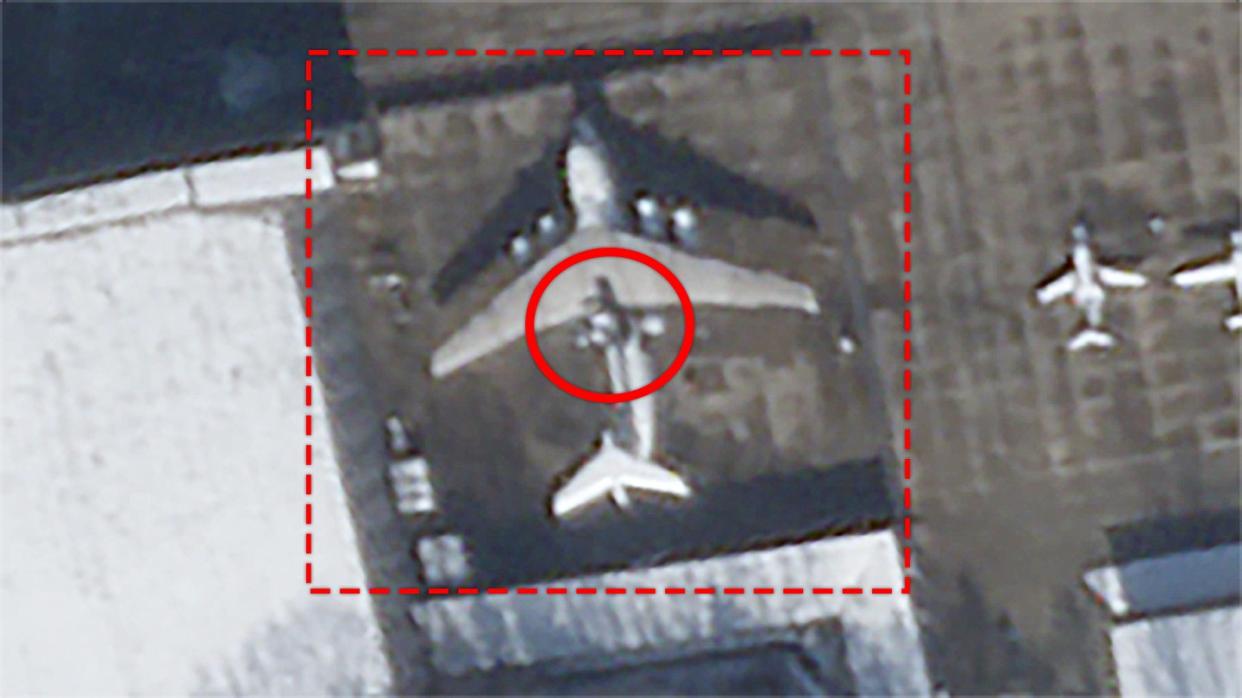
- Oops!Something went wrong.Please try again later.
Satellite imagery suggests that North Korea may be in the process of building an airborne early warning and control (AEW&C) aircraft. Should work be underway to develop a North Korean AEW&C capability, the result could well provide a very useful addition to Pyongyang’s armory, especially the potential to offer advance warning of aircraft and missile strikes launched from the south. On the other hand, such an asset would itself immediately become one of the highest-priority targets for South Korea and the U.S., which would likely seek to destroy right as the hostilities begin.
The satellite images in question come from Planet Labs and the possible AEW&C aircraft was first identified by Decker Eveleth, graduate research assistant at the James Martin Center for Nonproliferation Studies.
https://www.twitter.com/dex_eve/status/1735393156068442358?s=20
The images show an Ilyushin Il-76 Candid airlifter parked at Pyongyang International Airport. Work can be seen being undertaken on the top of its fuselage, just aft of the wing, where a radome is mounted on other AEW&C versions of the type. The aircraft is located in a new sectioned-off compound next to a maintenance hangar; construction of this cordoned-off area seems to have begun in late September.
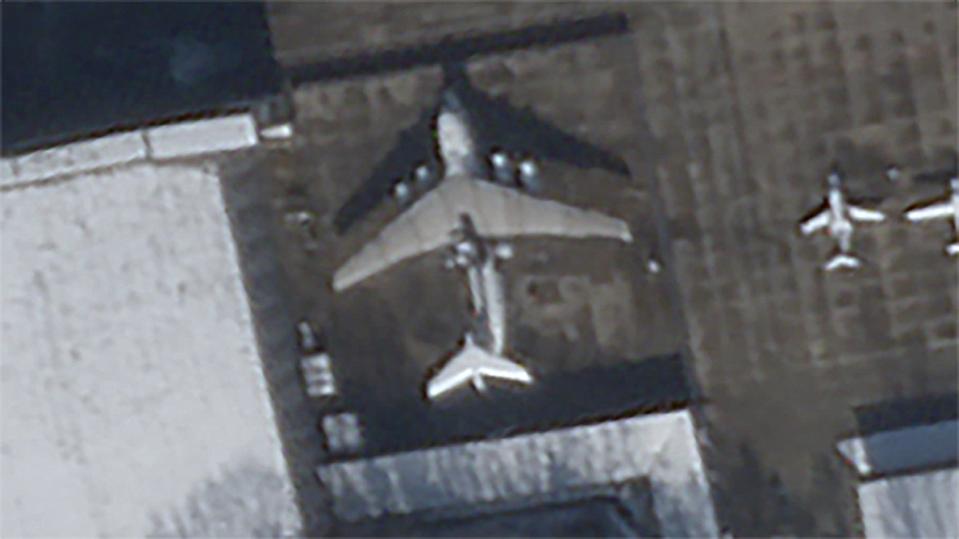
The most recent image taken on December 12th, seen above, suggests a mount for a radome has already been attached, with the shadow cast by it also visible. The work could be related to some other kind of modification, although the location of the object on top of the fuselage, as well as its general size, certainly is consistent with AEW&C adaptations of the Candid.
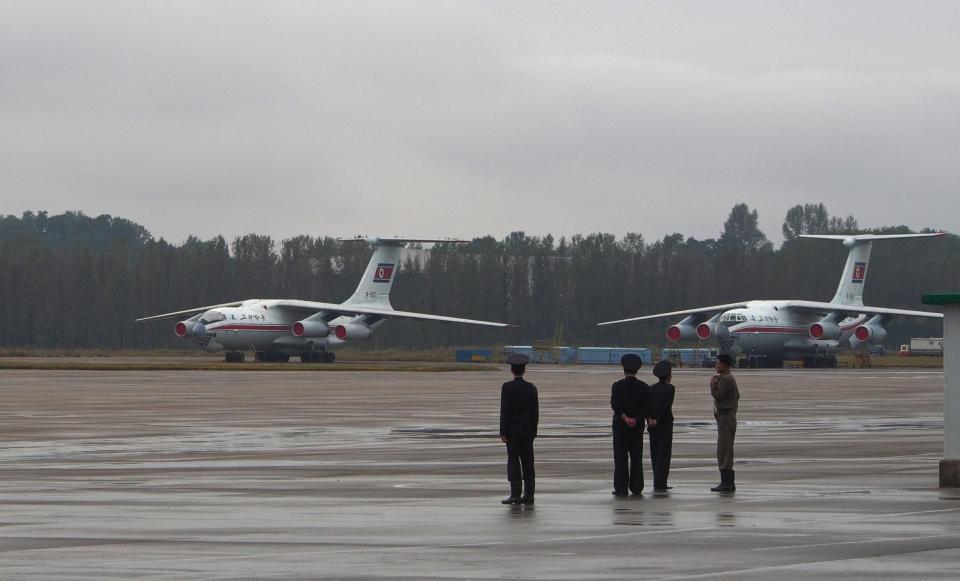
The Il-76 belongs to Air Koryo, the state-owned flag carrier of North Korea, which is thought to operate just three cargo-carrying Il-76MD models. These aircraft already do have a military role and at least one has been temporarily painted in camouflage in the past.
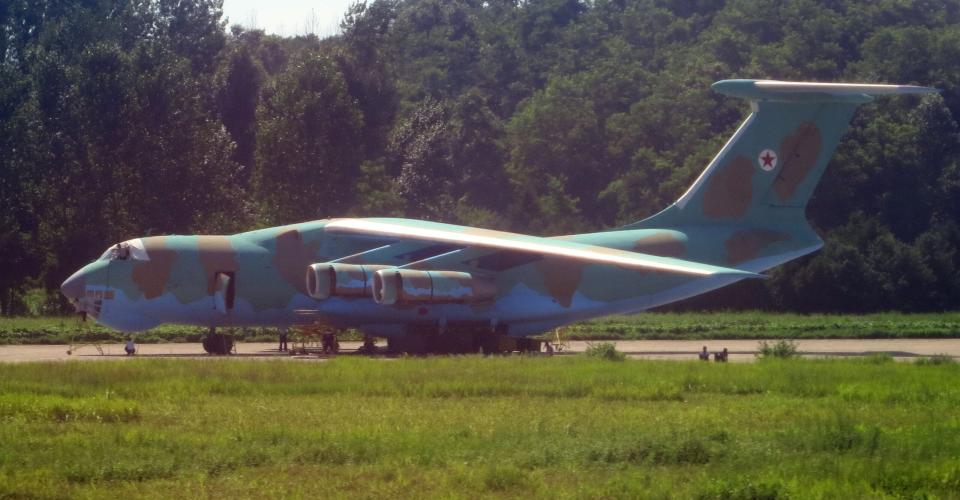
As for the Korean People’s Army Air Force (KPAF), as North Korea’s military flying branch is known, the forthcoming addition of an AEW&C aircraft would be a surprise. The KPAF is well known for its aging fleet of mainly Soviet-era aircraft, supplemented by a few Western types acquired by mainly nefarious means. Its most modern combat equipment comprises MiG-29 Fulcrum fighters and it still flies Shenyang F-5s, Chinese-made versions of the MiG-17 Fresco fighter, first flown in 1950, before the outbreak of the Korean War.
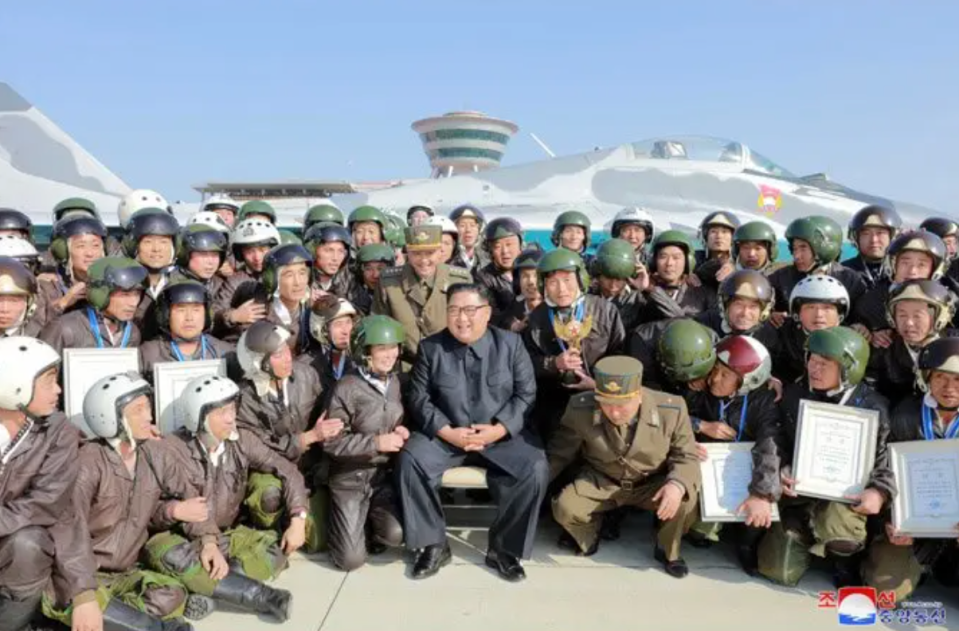
An AEW&C aircraft, even one based on an aging airframe, would be something of an anachronism for the KPAF, but it could also be a very useful addition. While it’s questionable to what degree more complex battle management and command and control functions could be mastered by North Korea, and hosted aboard an AEW&C aircraft, the ability to extend airborne radar coverage over considerable distances would be a great advantage, either providing prior warning of a potential attack from South Korea and/or tracking incoming aircraft and missiles during at least the opening moments of a conflict. The data it collects could also be shared with surface-to-air missile operators to help provide extra warning to enhance their operations. More importantly, it would provide a new tool for daily surveillance of North Korean and South Korean airspace and an avenue to learn to better perfect AEW&C capabilities.
Low-flying cruise missiles, in particular, are a category of weapon that South Korea is heavily focused on; more recently there have also been suggestions that Seoul may be considering fielding nuclear weapons, for which cruise missiles would have an obvious application as carriers. Regardless, conventional types are a top threat to the Kim regime and its military apparatus and would be used en-masse during the opening part of a conflict.
They are also particularly difficult targets for ground-based radar to spot, often evading detection until they are at close range, making it harder to engage them. An airborne radar, of the kind used in an AEW&C aircraft, would be much more effective in this regard and offer a 'look down' capability that can spot aircraft amongst the ground clutter and is far less impeded by high terrain compared to ground-based radars. North Korea lacks this capability entirely at this time. Still, provided North Korea only converts one Il-76 with an airborne radar, coverage would still be limited to when the aircraft is in the air.
https://www.youtube.com/watch?v=BsqO64Unw1c
Nevertheless, “An AEW system capable of detecting cruise missiles seems like something the DPRK would definitely be interested in,” Eveleth told NK Pro, the U.S.-based news website that focuses on North Korea.
“You’d theoretically put [the plane in the air] in a crisis and have it run a figure eight over the DPRK looking for incoming cruise munitions. I don’t think the platform is going to be doing any frequent or daily missions — if they’re doing AEW it would be a special occasions thing.”
However, the strategic utility of an AEW&C aircraft would make it a top priority target for South Korea and the United States, in a time of conflict with the North. Inherently vulnerable and highly visible — on radar, visibly and via its high-power electronic emissions — the KPAF would not be able to protect it during a sustained conflict. They would have to ensure the aircraft was constantly on the move, operating from unexpected locations, if it were to have any chance of surviving even a preemptive airstrike, which would, in turn, reduce its flexibility and effectiveness. That would suggest that the AEW&C aircraft might best be put to use on more routine operations, keeping tabs on movements over the border and providing valuable intelligence and day-to-day surveillance.
As to the capacity of North Korea’s military-industrial complex to develop a fully functioning AEW&C system, this is at least questionable. Fixed-wing AEW&C aircraft have only been developed by relatively few countries, with those now in service originating from China, India, Israel, Russia, Sweden, and the United States.
Of these, it’s notable that Russia and China have both used the Il-76 platform as the basis for AEW&C aircraft, as the A-50 Mainstay and KJ-2000 Mainring, respectively. AEW&C versions of the Candid have, in the past, also been operated by Iraq and Iran.
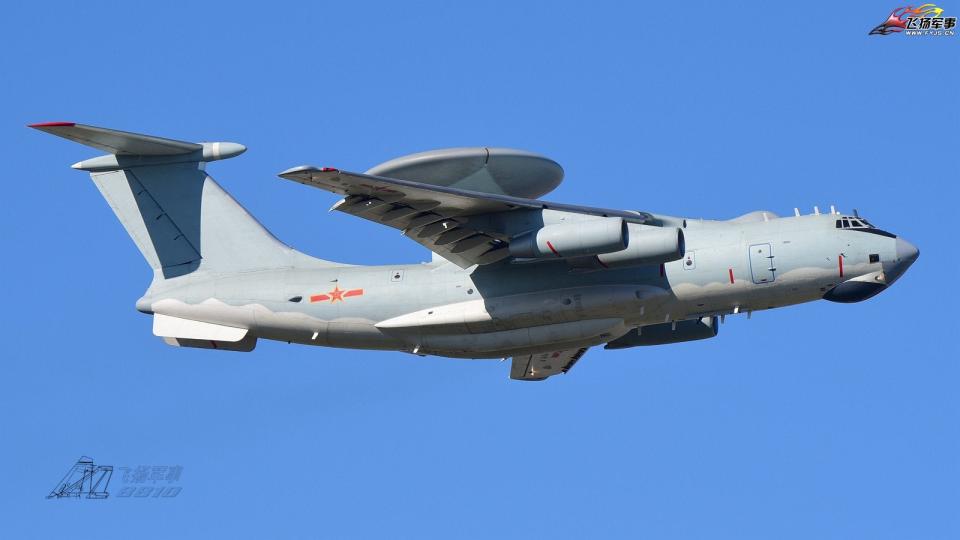
There is a real possibility that Russia is assisting North Korea in developing an AEW&C capability if that’s indeed what this satellite image shows.
Since Russia’s full-scale invasion of Ukraine, Moscow and Pyongyang have become more closely aligned. Most notably, South Korea’s intelligence agency disclosed last month that North Korea has so far sent more than 10 shipments of munitions to Russia for use in the war against Ukraine. Arms supplied by Pyongyang to Moscow are said to include more than one million artillery rounds.
At the same time, reports are emerging that Russia may have provided North Korea with satellite launch technology to help it pursue its burgeoning ambitions in space. There had previously been predictions, including from The War Zone, that Pyongyang and Moscow might come to an arrangement whereby Russia supplied missile and/or spaceflight technology, or other high-end military assistance, in exchange for a supply of North Korean weapons — especially artillery ammunition — for use in Ukraine.
Russia providing North Korea with AEW&C expertise, or even hardware, would not be entirely surprising based on these assumptions. At the same time, even an entry-level AEW&C capability would provide valuable experience, with the possibility to integrate it with more advanced Russian fighters and air defense systems, should they be delivered.
Meanwhile, Eveleth notes that Russia has recently started to dismantle some of their own Beriev Be-976 aircraft. These are essentially quasi-civilian derivatives of the A-50 Mainstay AEW&C aircraft, also based on an Il-76 platform and used as range-control and data recording assets, mainly during missile tests.
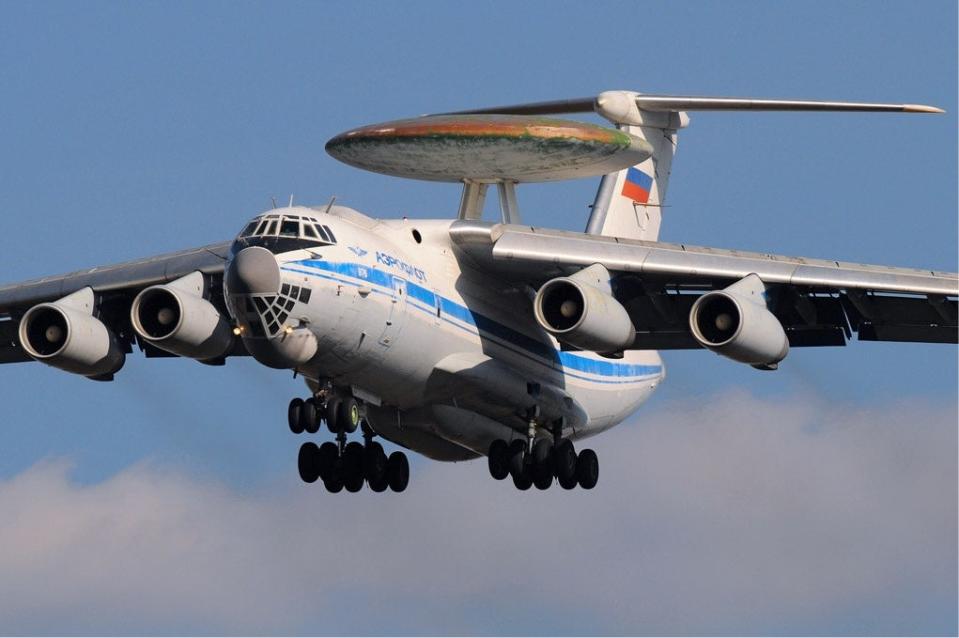
“Notably, the Russians apparently dismantled some of their missile telemetry aircraft recently, so it’s likely they have parts for them lying around,” Eveleth said. That could provide the opportunity for avionics from one or more of these aircraft to be ported over into a North Korean Il-76.
Of course, technologies from the AEW&C-configured A-50, or even the more advanced A-50U, could also form some part of mutual aid transfer with Pyongyang, perhaps being supplied in exchange for weapons to be used by Russia in Ukraine. Previously, there were suggestions that Russian-made fighter aircraft could form part of such a transaction after North Korean leader Kim Jong Un visited a factory that builds advanced fighters as part of a recent tour of Russia.
https://www.youtube.com/watch?v=ImS73otrYW8
Having a similar capability would make sense for North Korea, too, bearing in mind the fast pace of its own missile test programs. As well as a wide variety of ballistic missiles, these now increasingly encompass cruise missiles, as well as claimed hypersonic glide vehicles. With that in mind, an adapted Il-76, with airborne radar and telemetry equipment, could play a useful role in further developing these capabilities.
At this stage, we simply don’t know if the Il-76 spotted at Pyongyang International last month really will emerge as a radar-equipped AEW&C or surveillance aircraft, or if we are seeing some other adaptation taking shape or even just some unusually heavy maintenance.
What does seem to be beyond doubt is the fact that North Korea is currently investing heavily in developing its surveillance capabilities, as well as its missile armory. Recent months have seen the launch of the country’s first spy satellite as well as two new reconnaissance drones, loosely based on the U.S. MQ-9 Reaper and RQ-4 Global Hawk, respectively. This points to a growing recognition of the importance of timely intelligence, surveillance, and reconnaissance (ISR), something that the development of an AEW&C aircraft would also speak to.
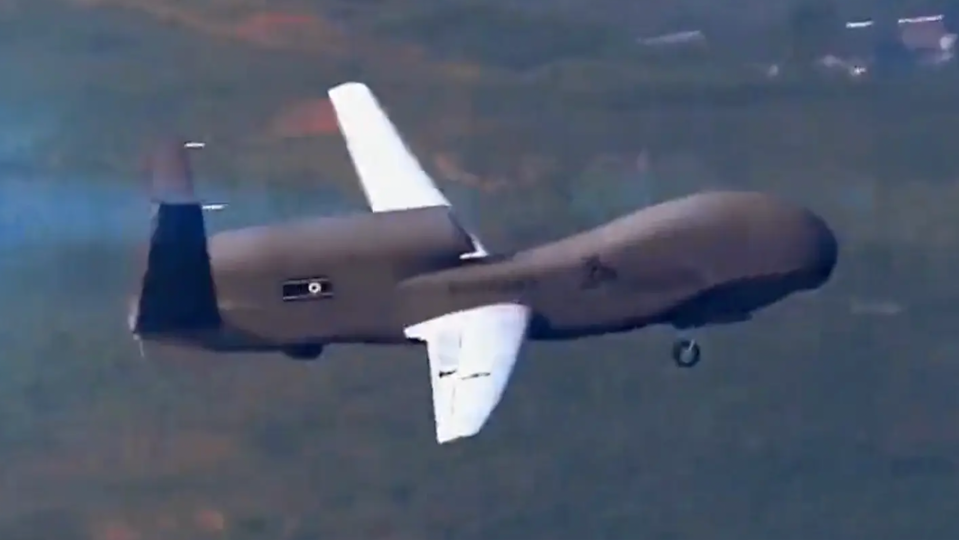
We will continue to watch with interest to see whether the mysterious work being undertaken on the Il-76 in Pyongyang really is an all-new North Korean AEW&C capability starting to take shape, or something entirely different.
Contact the author: thomas@thedrive.com

